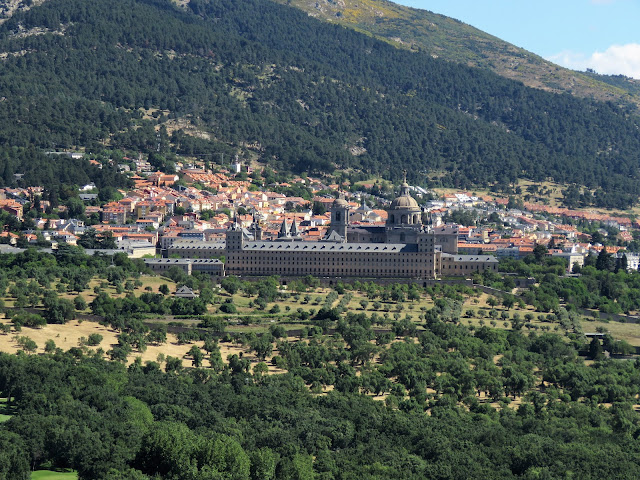An Pyrenean oak in two seasons
When I was Madrid a few months ago to attend the XVI Congreso Asociación Ibero-Macaronésica de Jardines Botánicos (with its theme 'Botanic Gardens facing Global Change'), the Director of the Real Jardín Botánico de Madrid took be see a few local oaks.
We saw the local variant of the Holly/Holm Oak (Quercus ilex), which they call the Ballota Oak - and botanists now call either Quercus ballota or Quercus rotundifolia - as well as a species less familiar to me, the Pyrenees Oak, Quercus pyrenaica.
I do know the species a little, from this beautiful specimen in our Oak Lawn at Royal Botanic Gardens Melbourne. In fact I've often caressed the soft, grey-green underbelly of the leaves as I passed by, marveling at their felty texture while thinking obtusely about the stages of the Tour de France bike race that cross the Les Pyrénées/Los Pireneos between France and Spain.
The Pyrenees Oaks I saw in nature, or at least in the kind of nature that you find in much of Europe, were growing in the hills above the palace and monastery, El Escorial, round what is today called Silla de Filipe II - a rock seat in the place where the king of Spain who had El Escorial built almost certainly did not sit.
They were growing alongside the local ash (Faxinus excelsior) and maple (Acer monspessulanum), among a craggy granite outcrop. From where they grew the view of El Escorial was certainly spectactular.
They also find themselves elsewhere in south-western Europe, including the Pyrenees, and north-west Africa.
Their soft, grey-green leaves – covered underneath in tiny star-shaped hairs – were fresh and new when I saw them in early June.
That seems to be partly the case with our tree, although a goodly proportion of leaves were also on the ground in early winter.
I gather, from my new 2-volume oak book - Chênes le guide illustré, by Antoine le Hardÿ de Beaulieu and Thierry Lamant (2nd edition, 2010) - that there is a cultivar with dropping branches called 'Pendula'. More impressive though is a massive specimen from El Torno, about 200 kilometres west of Madrid, that deserves its double-page spread.
The trees near El Escorial are younger and smaller, and presumably what comes after the logging or clearing of their ancestors. But the leaves are attractive as I recalled from spring in Melbourne, and in a setting fit for a king.
 |
| El Escorial from Filipe II's purported seat |






,%20Silla%20de%20Felipe%20II.jpg)
Comments